Steel Billet Bar Q235 Q275 Q345 for Coke Oven Door
- Loading Port:
- Dalian
- Payment Terms:
- TT OR LC
- Min Order Qty:
- 100 m.t.
- Supply Capability:
- 50000 m.t./month
OKorder Service Pledge
OKorder Financial Service
You Might Also Like
Steel Billet Bar Q235 Q275 Q345 for Coke Oven Door
Description
Reference Price:$260/ton Mn 0.3%-0.6%
Rectangular billet continuous casting billet and mainly general carbon steel, low carbon low silicon cold-rolled material, high quality carbon structural steel, high strength low alloy steel, special steel, etc.
The billet is mainly divided into two kinds from the shape:
Slab: cross section width and height of the ratio of the larger, mainly used for rolling plate.
Billet: equal cross section width and height, or a huge difference, mainly used for rolling steel, wire rod. ,
Steel billets have distinct characteristics as compared with already furnished steel bars and products. Billets have a specific grain structure, which enables the metal to be processed more intricately. Steel billets are also known for their malleability and ductility, especially when exposed to varying temperatures during shaping and molding.
Processing of Steel Billet
Steel billets are considered fresh and raw, and they must undergo a series of manufacturing processes before they can be used for various purposes. Billets are made by means of freezing molten liquid, and are later exposed to extremely low temperatures in order to allow the metal to take shape and solidify in chemical structure. The temperature manipulates the metal's physical properties, and tones its strength and durability. The subsequent processes provide the metal's curved mold design so that it can fit the allotted space provided by other machines, which complete the finishing procedures.
Images
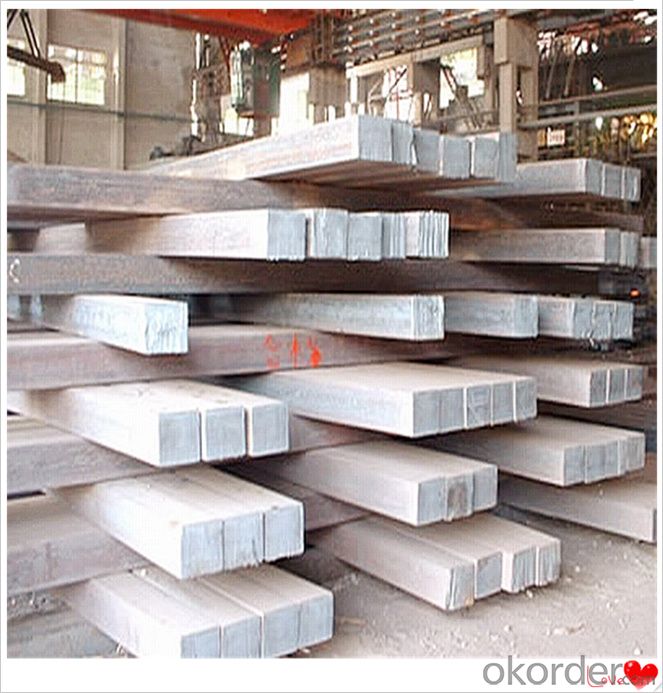
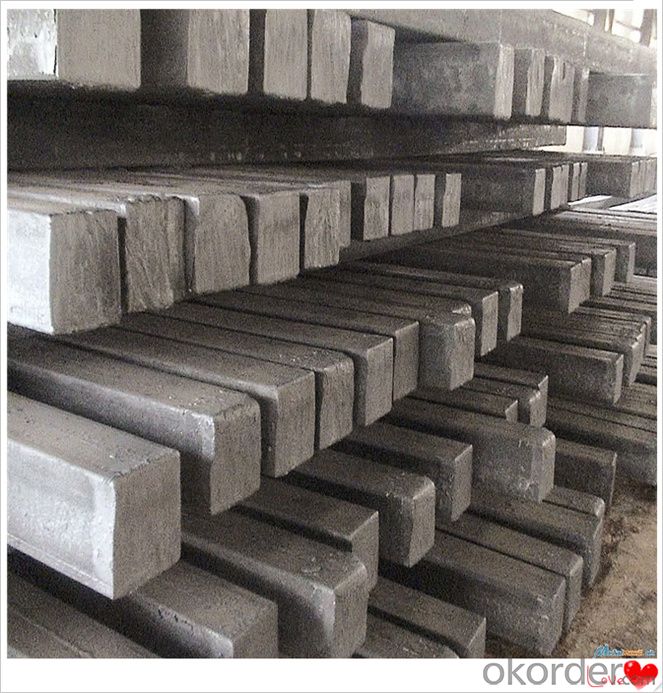
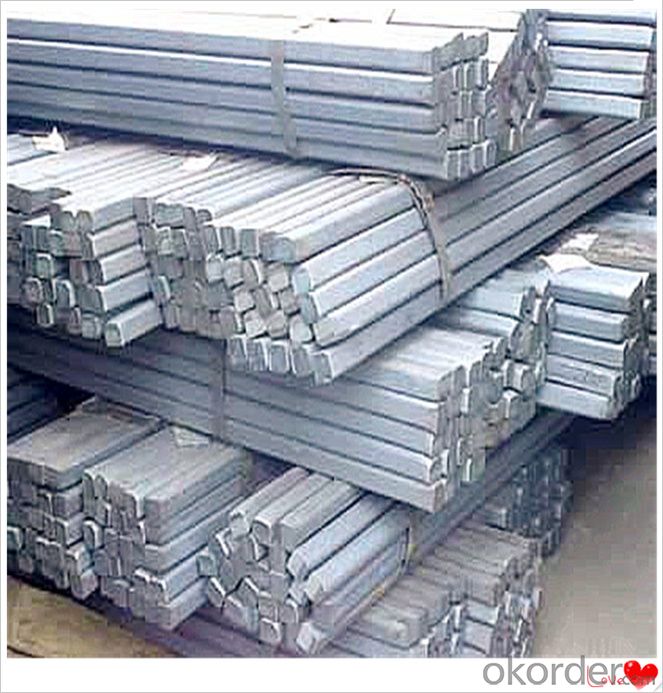
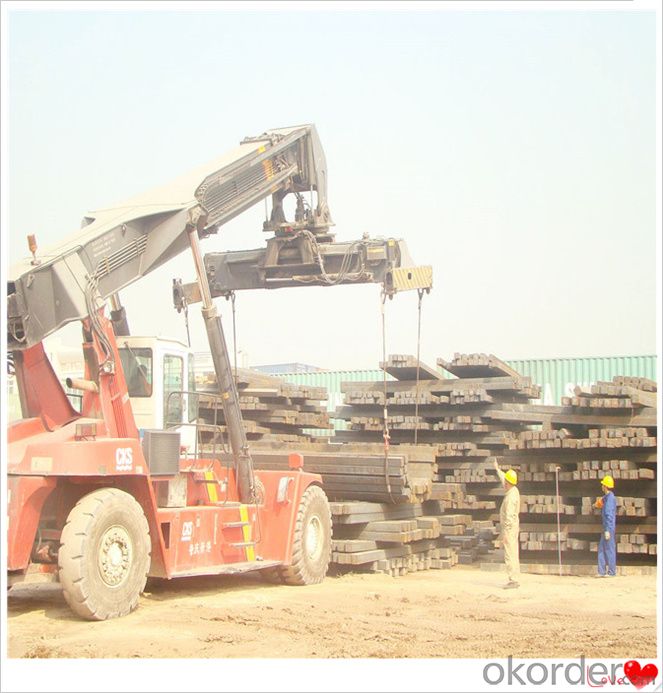
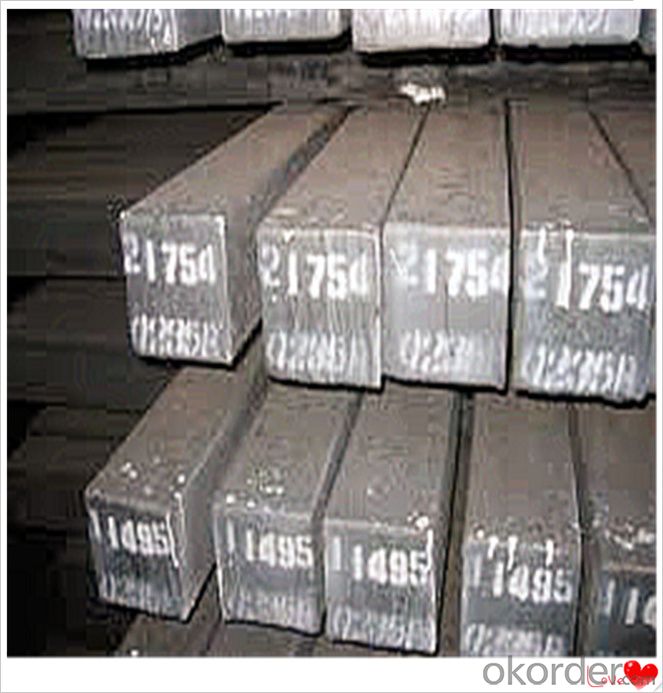
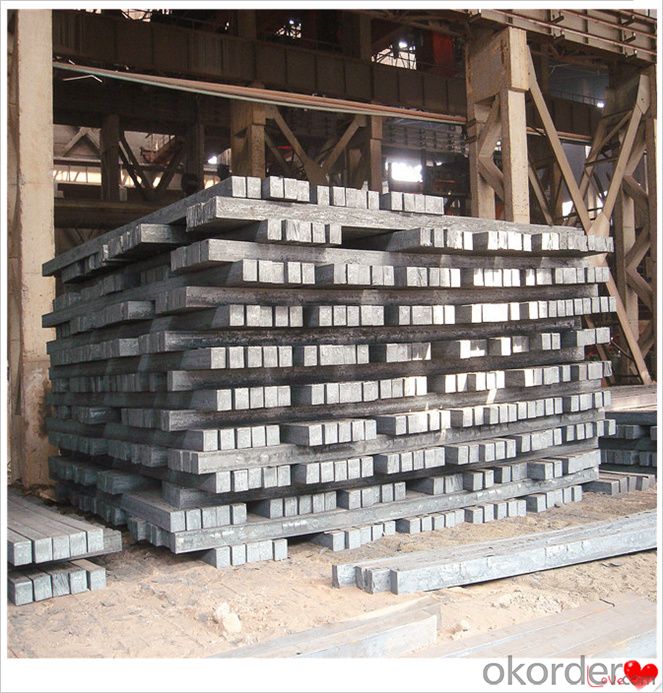
Technical Data
Size:100*100,120*120,150*150,130*130
Mn: 0.3%-0.6%
C: 1%
Cr:0.1%
Packaging
cargo ship or container
usually container price will add 15USD per ton
RFQ
We have organized several common questions for our clients,may help you sincerely:
1) How about your company?
A world class manufacturer & supplier of castings forging in carbon steel and alloy steel,is one of the large-scale professional investment casting production bases in China,consisting of both casting foundry forging and machining factory. Annually more than 8000 tons Precision casting and forging parts are exported to markets in Europe,America and Japan. OEM casting and forging service available according to customer’s requirements.
2) How to guarantee the quality of the products?
We have established the international advanced quality management system,every link from raw material to final product we have strict quality test;We resolutely put an end to unqualified products flowing into the market. At the same time, we will provide necessary follow-up service assurance.
3) How long can we receive the product after purchase?
In the purchase of product within three working days, We will arrange the factory delivery as soon as possible. The pecific time of receiving is related to the state and position of customers.Commonly 7 to 10 working days can be served.
4)Do you have your own QC department?
Yes, we have, our QC department will inspect the goods during the process of mass production and after completion of production.
hot sale!!! steel billets/ mild steel bar/ billet steel
(1): High quality steel with reasonable price.
(2): Wide excellent experiences with after-sale service.
(3): Every process will be checked by responsible QC which insures every product's quality.
(4): Professional packing teams which keep every packing safely.
(5): Trial order can be done in one week.
(6): Samples can be provided as your requirements.
If you are interested in our products, please don't hesitate to contact me.
Your any inquiry will be appreciated and we will offer you a rock-bottom price.
- Q:What are the different heat treatment processes for steel billets?
- Steel billets can undergo various heat treatment processes, each serving a specific purpose and offering distinct advantages. Among the commonly used processes are annealing, normalizing, quenching, tempering, and case hardening. 1. Annealing: The steel billets are heated to high temperatures and gradually cooled to room temperature. This process aims to reduce hardness, enhance machinability, relieve internal stresses, and refine the grain structure, resulting in a more ductile and less brittle steel. 2. Normalizing: By heating the steel billets above the critical range and cooling them in still air, the normalizing process refines the grain structure, improves mechanical properties and machinability, relieves internal stresses, and achieves uniformity in microstructure. 3. Quenching: Rapid cooling of steel billets is achieved by immersing them in a quenching medium like oil, water, or brine. Quenching transforms the austenite phase into martensite, making the steel harder and more wear-resistant. However, it may introduce residual stresses and the risk of cracking. 4. Tempering: Following quenching, tempering is often performed to reduce brittleness and enhance toughness. The quenched steel is reheated to a lower temperature and held for a specific time period. This process relieves stresses, decreases hardness, and improves ductility without sacrificing too much strength. 5. Case Hardening: This process elevates the surface hardness of steel billets while maintaining a tough and ductile core. Carburizing and nitriding are two common methods of case hardening. Carburizing involves heating the steel in a carbon-rich environment to introduce carbon into the surface. Nitriding, on the other hand, introduces nitrogen to form a hard nitride layer. These processes enhance wear resistance and prolong the lifespan of the steel billets. These heat treatment processes allow manufacturers to customize the properties of steel billets to meet specific application requirements. By carefully selecting and implementing the appropriate process, the resulting steel billets can exhibit a wide range of mechanical properties, including hardness, strength, toughness, and wear resistance.
- Q:What are the common surface defects found in steel billets?
- Steel billets commonly exhibit surface defects, including scale, surface cracks, inclusions, decarburization, surface roughness, roll marks, and lamination. Scale, an oxide layer formed during manufacturing, appears as a flaky, rough coating and impacts steel quality. Surface cracks, caused by improper cooling, handling, or excessive stress, weaken the steel. Inclusions, non-metallic impurities like oxides or sulfides, create weak spots. Decarburization, carbon loss from the billet's surface due to high temperatures or inadequate protection, reduces hardness and strength. Surface roughness, irregularities from processing or handling, affects appearance. Roll marks result from issues with rolling mill equipment. Lamination refers to layering or separations within the billet, caused by poor solidification, temperature control, or impurities. Detecting and addressing these defects is crucial for producing high-quality steel. Inspection techniques like visual inspection, ultrasonic testing, magnetic particle testing, and eddy current testing help identify and classify defects.
- Q:Are there any alternative materials to steel billets in certain applications?
- Yes, there are several alternative materials to steel billets in certain applications. Some of these alternative materials include: 1. Aluminum: Aluminum is a lightweight and corrosion-resistant material that is commonly used as an alternative to steel in applications where weight reduction is important, such as in the aerospace industry. 2. Copper: Copper is a ductile and highly conductive material that is often used in electrical and plumbing applications. It is an alternative to steel billets in applications where high electrical conductivity is required. 3. Titanium: Titanium is a lightweight and high-strength material that is commonly used in applications that require both strength and corrosion resistance, such as in the automotive and aerospace industries. 4. Composite materials: Composite materials, such as carbon fiber reinforced polymers, are increasingly being used as alternatives to steel in applications where weight reduction and high strength are critical, such as in the construction of aircraft and high-performance sports equipment. 5. Plastic: Some applications that do not require high strength or durability can use plastic as an alternative material to steel billets. Plastic is lightweight, cost-effective, and can be easily molded into various shapes. It is important to consider the specific requirements of each application when choosing an alternative material to steel billets, as each material has its own unique properties and limitations.
- Q:How do steel billets contribute to the manufacturing of construction supplies?
- Steel billets play a crucial role in the manufacturing of construction supplies. These billets are semi-finished products that are typically obtained through the process of continuous casting or ingot casting. They are essentially long, rectangular-shaped bars of steel that serve as the raw material for various construction products. One of the primary ways steel billets contribute to the manufacturing of construction supplies is through the production of reinforced bars, commonly known as rebars. Rebars are used extensively in the construction industry to provide strength and structural integrity to concrete structures such as buildings, bridges, and roads. By using steel billets, manufacturers can produce rebars of different sizes and lengths to meet specific construction requirements. Additionally, steel billets are also used in the production of various other construction supplies such as wire rods, pipes, and structural sections. Wire rods, for example, are used in the manufacturing of wire mesh, nails, and other reinforcing materials. Steel billets are also utilized to produce pipes that are widely used in plumbing, drainage systems, and infrastructure projects. Furthermore, structural sections made from steel billets are utilized to create beams, columns, and other load-bearing components in construction projects. The use of steel billets in the manufacturing of construction supplies ensures the final products possess excellent strength, durability, and resistance to corrosion. This is crucial for construction materials as they need to withstand various environmental factors and heavy loads. The versatility of steel billets allows manufacturers to produce a wide range of construction supplies that can meet the specific needs and requirements of different construction projects. In summary, steel billets are instrumental in the manufacturing of construction supplies. They serve as the raw material for producing rebars, wire rods, pipes, and structural sections, all of which are essential components in construction projects. The use of steel billets ensures that these construction supplies possess the necessary strength, durability, and resistance to corrosion, making them suitable for a wide range of construction applications.
- Q:How are steel billets used in the manufacturing of oil and gas equipment?
- The production of oil and gas equipment heavily relies on steel billets. These semi-finished steel products act as the foundation for creating various equipment used in the oil and gas industry. Steel billets are primarily used in pipe manufacturing. To withstand high pressure, extreme temperatures, and corrosive environments, oil and gas pipes require raw materials that can meet these demanding requirements. Steel billets are heated, pierced, and elongated through extrusion to form seamless pipes. Alternatively, they can be rolled and welded to create longitudinally welded pipes. Additionally, steel billets are essential in the production of valves, fittings, and flanges. Valves are critical in controlling the flow of oil and gas, while fittings connect pipes and change their direction. Flanges provide a means of connecting pipes, valves, and other equipment through bolting. All of these components require steel billets as a starting material, which are then machined, shaped, and heat-treated to meet necessary specifications. Furthermore, steel billets are utilized in the fabrication of drilling equipment and offshore structures. Drilling equipment, including drill bits, drill collars, and drill pipes, are vital for oil and gas exploration and extraction. High-quality steel billets are crucial to ensure the strength and durability of these components, which endure intense forces and harsh conditions. Offshore structures, such as platforms and rigs, also rely on steel billets to construct frameworks and support systems that withstand the challenging marine environment. In conclusion, steel billets are irreplaceable in the manufacturing of oil and gas equipment. They serve as the raw material for pipes, valves, fittings, flanges, drilling equipment, and offshore structures. By starting with high-quality steel billets, manufacturers can produce durable and reliable equipment capable of withstanding the demanding conditions of the oil and gas industry.
- Q:How are steel billets used in the manufacturing of machine parts?
- Steel billets are an essential raw material in the manufacturing of machine parts. These billets are solid, semi-finished steel products that are cast into specific shapes and sizes. The process of using steel billets involves various stages. Firstly, the steel billets are heated in a furnace to a specific temperature, which softens the metal and makes it more malleable. Once the billets reach the desired temperature, they are ready for further processing. Next, the heated billets are transferred to a rolling mill, where they undergo a process called hot rolling. In this process, the billets are passed through a series of rollers, which apply pressure and shape them into desired forms such as bars, rods, or sheets. The hot rolling process ensures that the steel billets achieve the required dimensions and surface finish. After hot rolling, the shaped steel billets are further processed through different techniques such as cutting, forging, or machining to fabricate machine parts. These parts can include gears, shafts, valves, or any other component required for machinery. The use of steel billets in the manufacturing of machine parts offers several advantages. Firstly, steel billets are known for their high strength and durability, making them ideal for producing parts that can withstand heavy loads and harsh operating conditions. Additionally, the malleability of steel billets allows for the creation of intricate shapes and designs, ensuring the production of complex machine parts. Moreover, steel billets can be easily customized to meet specific requirements. They can be alloyed with other metals or undergo various heat treatments to enhance their properties such as hardness, corrosion resistance, or wear resistance. This versatility of steel billets makes them suitable for a wide range of machine parts across different industries. In conclusion, steel billets play a crucial role in the manufacturing of machine parts. Through processes such as hot rolling, cutting, forging, and machining, steel billets are transformed into various shapes and sizes to create durable and high-quality components for machinery. The versatility and strength of steel billets make them an indispensable raw material in the manufacturing industry.
- Q:Can steel billets be used in the production of sculptures and artwork?
- Yes, steel billets can be used in the production of sculptures and artwork. Steel's strength and durability make it a popular choice for creating large outdoor sculptures or intricate metal artwork. The material can be shaped, welded, and manipulated to bring artistic visions to life, offering artists a versatile medium to express their creativity.
- Q:What are the potential applications of steel billets in the medical aftermarket?
- Steel billets have a wide range of potential applications in the medical aftermarket. One key application is in the manufacturing of surgical instruments. Steel billets can be used to produce high-quality, durable surgical instruments such as scalpels, forceps, scissors, and orthopedic implants. The strength and corrosion resistance of steel make it an ideal material for these critical medical tools. Additionally, steel billets can be used in the production of medical equipment and devices. For example, they can be used to manufacture components for X-ray machines, CT scanners, and MRI machines. Steel's excellent conductivity and high strength-to-weight ratio make it a suitable choice for these demanding applications. Furthermore, steel billets can be utilized in the production of medical furniture and fixtures. Steel is commonly used in the construction of hospital beds, examination tables, and cabinets due to its durability and ease of maintenance. Steel billets can provide the necessary raw material for the manufacturing of these essential medical items. Moreover, steel billets can also be employed in the fabrication of prosthetics and orthotics. These devices often require strong and lightweight materials to ensure proper functionality and comfort for patients. Steel billets can be processed into various shapes and sizes to create prosthetic limbs, braces, and other orthopedic devices. In conclusion, the potential applications of steel billets in the medical aftermarket are diverse and crucial. From surgical instruments to medical equipment, furniture, and prosthetics, steel billets offer the necessary strength, durability, and corrosion resistance to meet the demanding requirements of the medical industry.
- Q:How do steel billets contribute to the mining industry?
- Steel billets are an essential component in the mining industry as they are used in the production of various mining equipment and infrastructure. These billets are often transformed into durable and strong steel products such as pipes, rods, and supports that are crucial for the extraction, transportation, and processing of minerals. Additionally, steel billets are also utilized in constructing mining machinery, vehicles, and structures, ensuring the industry's efficiency and safety.
- Q:Are steel billets subject to any international standards?
- Yes, steel billets are subject to international standards. Several organizations such as the International Organization for Standardization (ISO) and the American Society for Testing and Materials (ASTM) have established specific standards for the production, quality, and properties of steel billets. These standards ensure consistency, safety, and interoperability in the global steel industry.
1. Manufacturer Overview |
|
|---|---|
| Location | |
| Year Established | |
| Annual Output Value | |
| Main Markets | |
| Company Certifications | |
2. Manufacturer Certificates |
|
|---|---|
| a) Certification Name | |
| Range | |
| Reference | |
| Validity Period | |
3. Manufacturer Capability |
|
|---|---|
| a)Trade Capacity | |
| Nearest Port | |
| Export Percentage | |
| No.of Employees in Trade Department | |
| Language Spoken: | |
| b)Factory Information | |
| Factory Size: | |
| No. of Production Lines | |
| Contract Manufacturing | |
| Product Price Range | |
Send your message to us
Steel Billet Bar Q235 Q275 Q345 for Coke Oven Door
- Loading Port:
- Dalian
- Payment Terms:
- TT OR LC
- Min Order Qty:
- 100 m.t.
- Supply Capability:
- 50000 m.t./month
OKorder Service Pledge
OKorder Financial Service
Similar products
New products
Hot products
Hot Searches
Related keywords
































